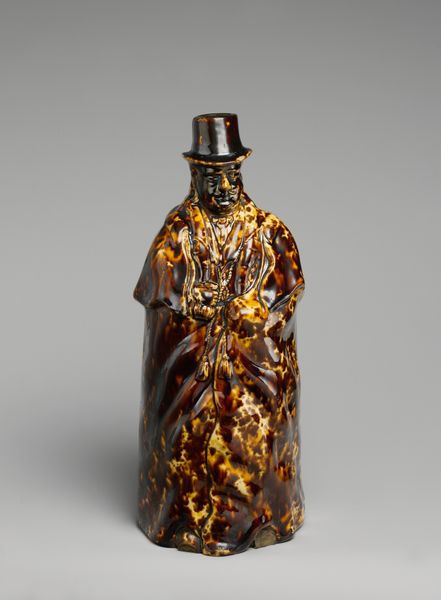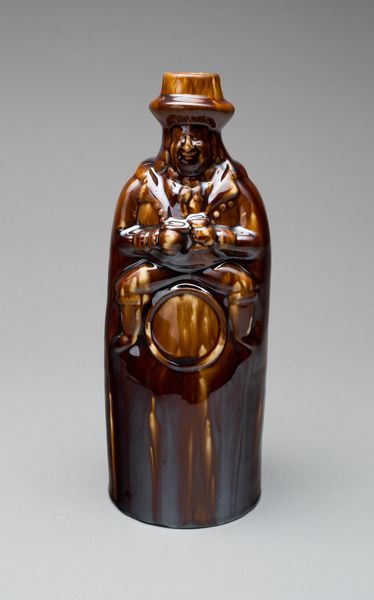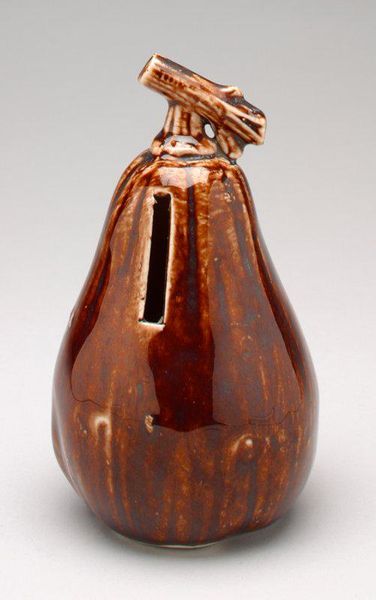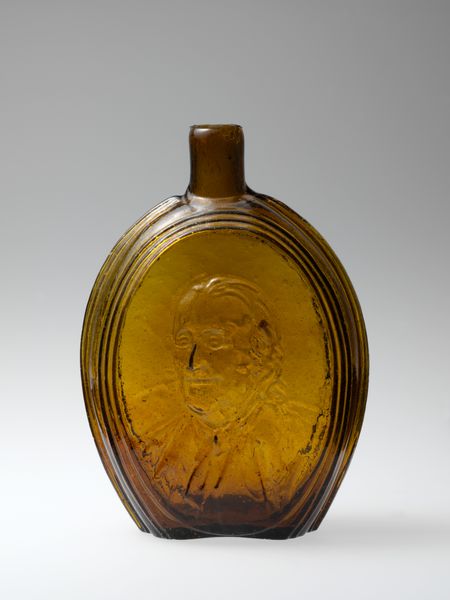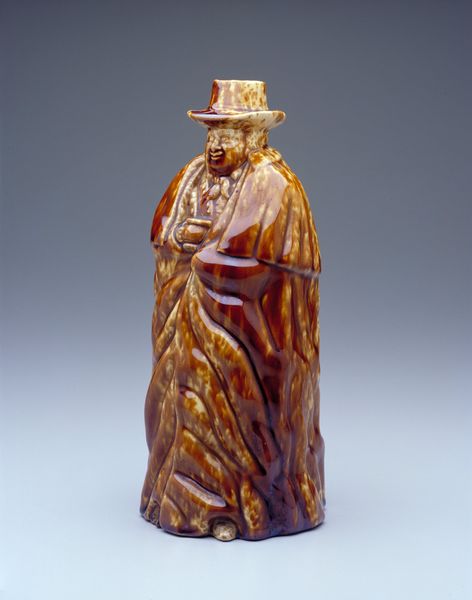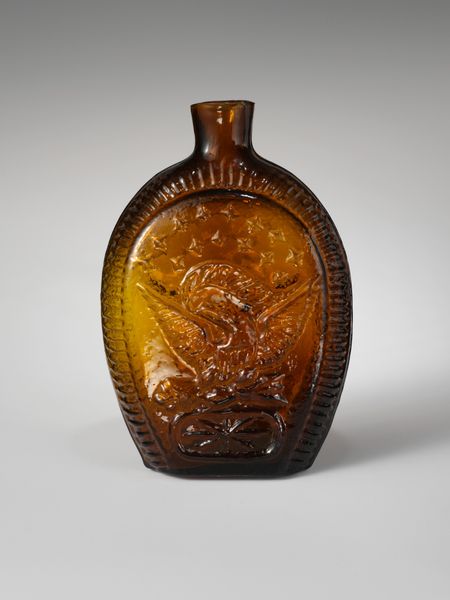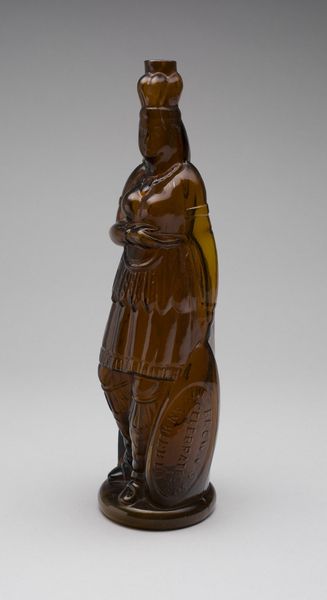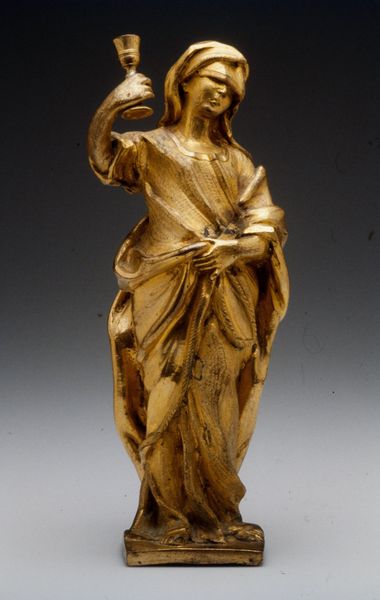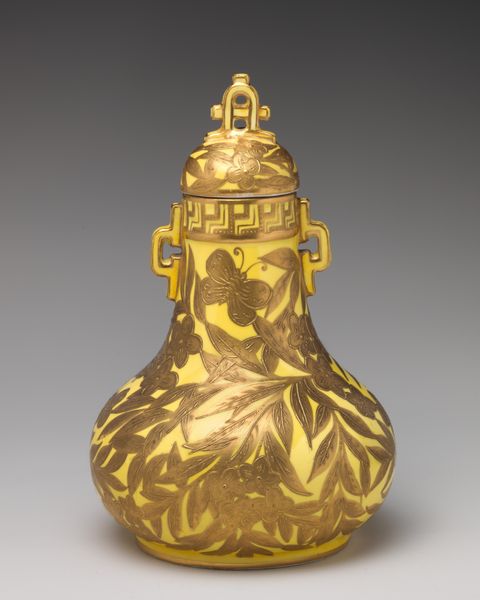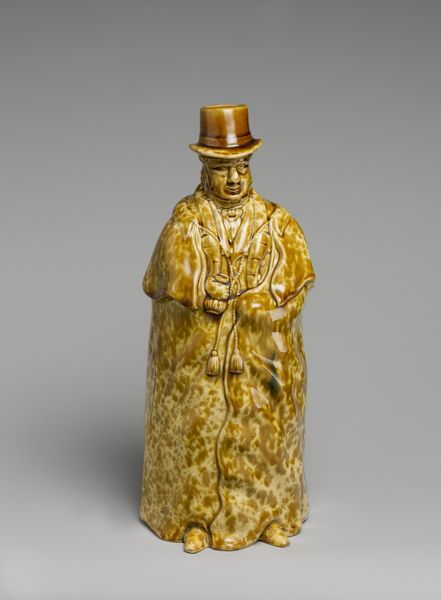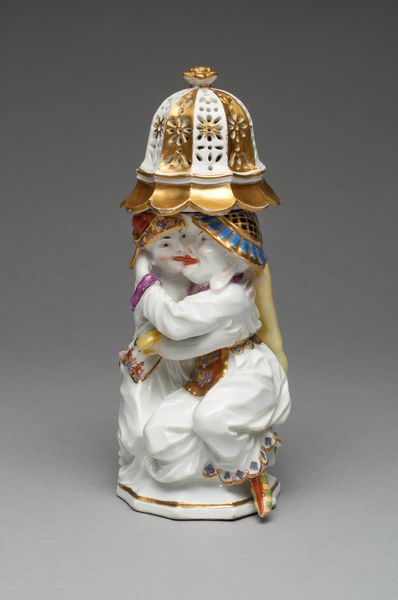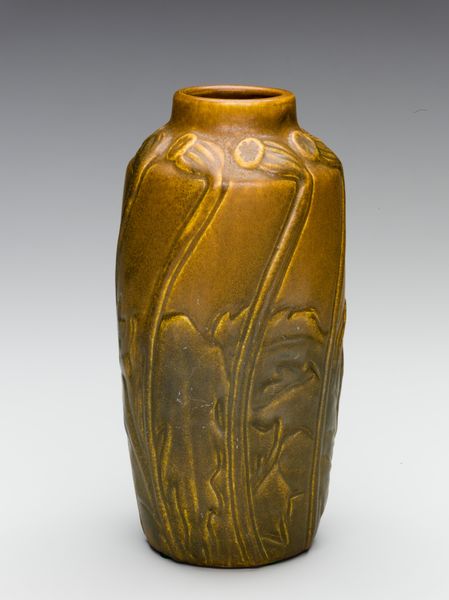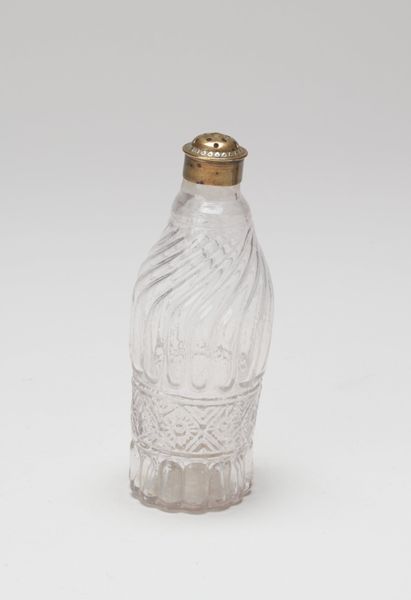
ceramic, sculpture
#
portrait
#
ceramic
#
figuration
#
vessel
#
folk-art
#
sculpture
#
ceramic
Dimensions: 26.3 × 11.9 cm (10 3/8 × 4 11/16 in.)
Copyright: Public Domain
Editor: So this is "Bottle," made sometime between 1849 and 1852 by Lyman, Fenton & Co. It's ceramic, a figure sculpture that's held at the Art Institute of Chicago. The mottled brown glaze gives it such a distinctive and slightly unsettling presence. How do you interpret the success of its design and materiality? Curator: A successful piece of ceramic work depends entirely on the congruity between form and execution. In this case, observe the way the glaze, through its texture and varied tonality, emphasizes the exaggerated draping of the figure's coat. Consider, too, how the rigidity of the ceramic material both reinforces and contrasts with the fluid lines of the folds. Does that fluidity enhance the human aspect? Editor: I think it definitely makes it more engaging; it's like the statue is mid-motion even though it is obviously an inanimate, static object. It keeps the viewer moving along those lines, exploring it inch by inch, as opposed to all at once. Curator: Precisely. And it is this sustained visual engagement that points towards the efficacy of the artist’s compositional choices. Now, what semiotic function do you perceive in the peculiar placement of the hands, clasped as they are upon the body? Editor: It's an odd gesture, but almost endearing, like the figure is trying to protect themselves, but perhaps also holding something valuable. So that might make us pause and reflect. Thank you! I’ll think of form and function together in a new way moving forward! Curator: It’s important that any effective engagement with visuality stems from thoughtful analysis of its basic material forms.
Comments
No comments
Be the first to comment and join the conversation on the ultimate creative platform.

